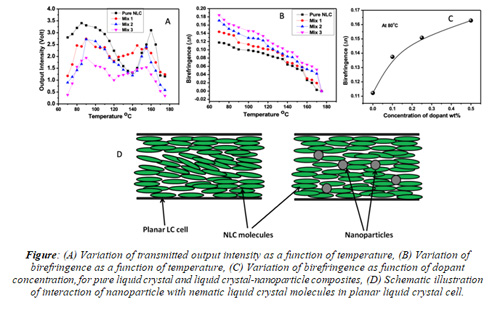 Scientists have prepared liquid crystal - nanoparticle composite materials using nematic liquid crystal and nano-particles synthesized from biowaste, which has the potential to reduce the power consumption of display devices such as liquid crystal displays, mobiles, and laptops. These materials are environment friendly and less toxic, and hence such devices can safely be used at home, offices, or other public places without affecting the health or environmental implications.
Scientists have prepared liquid crystal - nanoparticle composite materials using nematic liquid crystal and nano-particles synthesized from biowaste, which has the potential to reduce the power consumption of display devices such as liquid crystal displays, mobiles, and laptops. These materials are environment friendly and less toxic, and hence such devices can safely be used at home, offices, or other public places without affecting the health or environmental implications.
A team of scientists from the Centre for Nano and Soft Matter Sciences (CeNS), Bengaluru, an autonomous institute of the Department of Science & Technology (DST) have prepared liquid crystal incorporated with porous carbon nanoparticles which can be used to make flat panel displays and phase shifters.
The scientists led by Dr Veena Prasad developed the liquid crystal - nanoparticle composite materials by incorporating carbon nanoparticles synthesized from teak wood waste, in collaboration with Dr Gurumurthy Hegde, Prof CNR Rao Chair Professor from BSN Centre for Nano-materials and Displays, BMS College of Engineering, Bengaluru. The nanoparticle was introduced into nematic liquid crystal-synthesized in CeNS lab, and the team found that the incorporation of the porous carbon nanoparticles into nematic liquid crystal led to a decrease of the threshold voltage of the composite. Lower threshold voltage means that smaller voltage is required for switching of liquid crystals in these composites. This work has been recently published in the ‘Journal of Molecular Liquids’.
Publication link:
doi:10.1016/j.molliq.2020.113643
For further details, contact Dr. Veena Prasad (veena[at]cens[dot]res[dot]in).






























